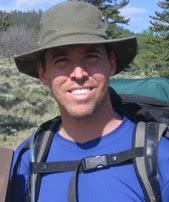According to a recent announcement in the New England Journal of Medicine it will soon be possible to conduct most of the interesting forms of stem cell research in the United States and many other countries around the world. The reason for the “breakthrough” in stem cell research is that there is an apparent loophole in the laws most countries have enacted regarding research in this highly controversial and hotly contested field. This issue is this: Most countries prohibit the creation of stem cells from human embryos but not work on established cell lines derived from embryos that have already been sacrificed. Indeed, George Bush has said that to not use established cell lines would be morally wrong.
All it takes is one country.
Woo-Suk Hwang, a stem cell biologist at the Seoul National University, has announced that his organization, the World Stem Cell Hub, will provide custom made stem cell lines to anyone in the world who requests them. Because South Korea does not have laws governing the production of human embryos they are free to create and destroy embryos and then offer them to whoever commissioned their existence in the first place. What’s more, Hwang’s research associates are willing to travel to the site of research (let’s say San Francisco) recruit egg and nuclear materials donors, and take their samples back to South Korea for the creation of embryos by the technique known as somatic nuclear transfer (SNT - commonly called cloning). After the process of embryogenesis is complete, a cell line will be established which can be sent back to the lab in San Francisco for research purposes.
This development in the ongoing story of stem cell research raises several interesting questions that will likely take much more space than can be allocated to a single SNF segment, but let’s take a crack at a one of them.
Let’s start with the technique. In SNT you must start with an egg cell (oocyte) extracted from a willing female. This oocyte contains exactly half of the information necessary to create a new human life, without a sperm cell there will be no newly developing embryo. No genetically unique life. This oocyte is essentially held stationary by a small set of tweezers, and almost all of the genetic material is extracted through a very small needle – essentially the nucleus and polar bodies are removed. We now have an oocyte, sans DNA. Left to itself this ghost of a cell will cease to exist in a few hours. Next the researchers implant a nucleus taken from and adult cell that contains all of the DNA needed to allow it (the cell) to reproduce. In essence, the cell that begins to divide is an egg cell with a transplanted nucleus. SNT is a difficult technique to master using the eggs and nuclei of higher vertebrates. Just getting the cells to survive the procedure is difficult and has a fairly high failure rate.
So what are we to think of this newly cloned cell? If we were to implant it into a willing female there is at least a slight chance that it would continue to grow into a fully formed human child that is genetically identical to the donor of the nucleus. To date, no one has successfully demonstrated that this procedure would work in humans; however, it has been successfully demonstrated in many lower vertebrate species. If, on the other hand, we were to disrupt the slowly growing clump of cells that results from SNT, we would have a stem cell line that could (theoretically) be used to research many different diseases. While most people agree that reproductive cloning is not a direction this research should take many others would advocate the use of SNT technology to generate pseudoembryos-come-cell lines that can be used for research.
The loophole in current US law is a clause that allows researchers in the United States (in every state except South Dakota) to import these newly created stem cell lines from outside the country.
So, what are we to think about this new wrinkle in the saga of stem cell research? Should we mourn the loss of these embryos and then benefit from their sacrifice? Are these SNT generated embryos different in some qualitative manner from sperm/egg embryos that make them OK to use in research? And when does life begin, anyway? How can we know?
I wish I had solid, scientifically or doctrinally based answers to each of these questions. Unfortunately, with techniques this revolutionary that are pushing our definitions of unique human life we are left to grapple with the subtleties of an ever-shifting spectrum painted in shades of gray.
Thursday, June 5, 2008
Subscribe to:
Post Comments (Atom)

No comments:
Post a Comment